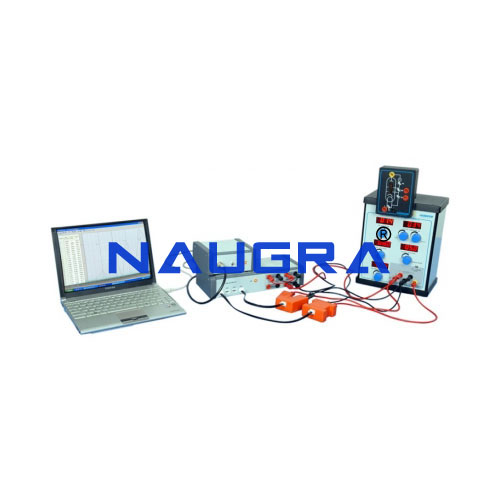- Civil Lab Mechanical Lab Engineering Lab Equipments
- sales@didacticlabequipments.com

CAT NO: DIDACTICNPS0028
Franck Hertz Experiment with Neon Ministerial Tender Board Equipment, Ministry of Education and Vocational Training Lab Tenders Suppliers India.
Franck-Hertz experiment will demonstrate the validity of the principle of quantization of energy. This experiment was very
important, from a historical point of view, because it supplied
the experimental data for confirming Bohr model ; Bohr was the
first physicist being able to infer the diagram of the electronic
levels of an atom.
This experiment can be carried out with Franck-Hertz tube that
can use mercury or neon. Both these tubes need a specific
power supply and an oscilloscope.
COMPONENTS
Franck-Hertz tube with neon filling and heater
power supply unit
20 MHz DUAL-TRACE OSCILLOSCOPE
TUBO DI FRANCK HERTZ CON NEON
Free electrons collide with neon atoms and generate energy in
quantized packages. During collision, neon atoms are excited
and they persist in this status for short time. Successively,
the neon atoms emit light, due to the energy drop from
intermediate levels to a fundamental state. The emitted light
is included in red-yellow region of spectrum. Light bands will
develop between control and acceleration grids. The parallel
geometry of these grids enables to display these bands on a
window.
Neon-filled tube can operate at ambient temperature.
Electrodes include a cathode, heated indirectly, a control grid,
an acceleration grid and a collector electrode. This tube is
mounted onto a base provided with sockets.
Characteristics
filament voltage: 4-8 Vac/dc
control voltage: 9 V
acceleration voltage: 80 V max.
Counter voltage: 1.2 – 10 Vdc
Tube : 130 x 26 Ï• mm
Base : 190 x 115 x 115 mm
Weight : 450 g
POWER SUPPLY UNIT FOR FRANCK-HERTZ EXPERIMENT
This unit will supply the necessary voltage for powering tubes
and it also includes a DC amplifier for measuring collector
current. Acceleration voltage is supplied by the alimentation
unit; inputs for anode current and acceleration voltage are
available.
Characteristics
Filament voltage: 4-12 V, variable continuously
Control voltage: 9 V at 10 mA
Acceleration voltage: 0-80 V
Operating modes: manual, variable continuously
Voltage control: 1.2 – 10 V, variable continuously
Analog outputs
Output signal: 0-12 V at 7 nA/V
Connections: through sockets of 4 mm
Dimensions : 160 x 132 x 210 mm
Physical Structure of Matter Franck Hertz Experiment with Neon Manufacturer,Supplier and Franck Hertz Experiment with Neon Exporter in India
